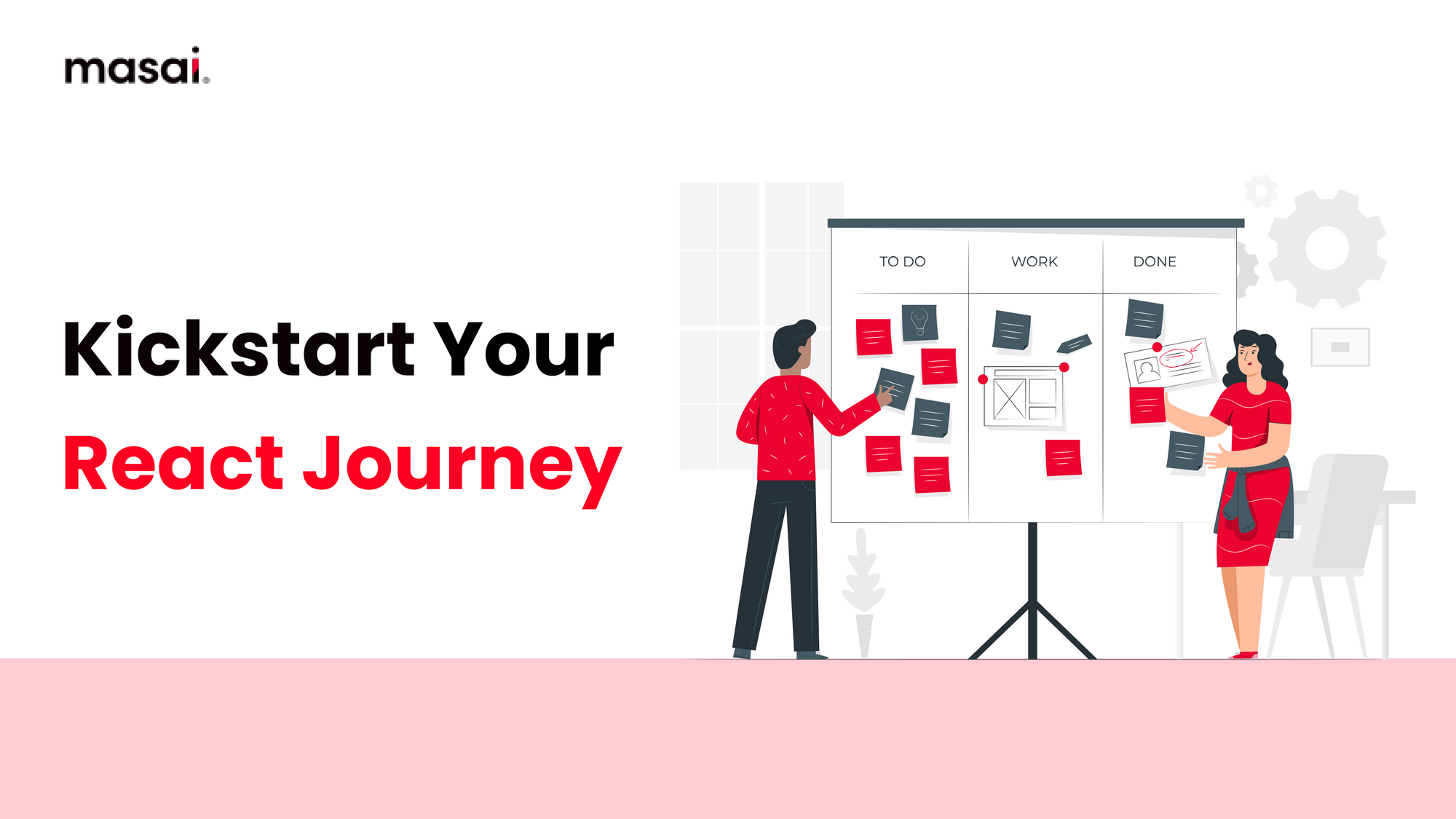Kickstart Your React Journey with These 10 Beginner-Friendly Projects
Explore the top 10 React projects ideal for beginners. Enhance your programming skills with practical experience, creating interactive UIs and more.

Introduction:
You know that sensation you get when you open a gift, and it's precisely what you wanted? Many people experience that type of exhilaration when they first use React. The rules may initially seem a little confusing, but once you figure them out, oh my, the pleasure is limitless! It's like getting a hold of a brand-new board game. You're about to go on an exciting trip if you're sitting there with your fingers eager to type, and your thoughts are racing with anticipation.
Consider this guide as your dependable compass guiding you in the correct route. Ten startup projects that we selected, each with its unique set of difficulties and benefits. Are you prepared to discover React's magic?
10-Beginner Projects
Here are the 10 beginner-friendly projects to start your journey with React.
1. To-Do List Application
A to-do list application is the "Hello, World!" of React for many developers. At its core, it introduces the fundamental concept of state management. In React, the state represents any data that might change over time and affect the UI. For a to-do list, this could be the tasks themselves. As you add or remove tasks, the state changes, and React efficiently updates the necessary parts of the UI.
2. Recipe Finder
The Recipe Finder project is a step up from the essential to-do list. Here, you're managing the local state and fetching external data. This introduces the concept of API integration in React. APIs (Application Programming Interfaces) are rules allowing different software entities to communicate. In this case, you'd be speaking with a recipe database. Using React's built-in hooks-like effect, you'd make asynchronous calls to fetch recipes based on user input.
3. Weather App
The Weather App is a comprehensive project that combines user input, API integration, and conditional rendering. First, you'd use the Geolocation API to fetch the user's location. With this data, you'd then make an API call to a weather service, fetching data specific to the user's location. This introduces the concept of chaining API calls based on previous data. Once you have the weather data, conditional rendering comes into play.
4. Quiz Application
A quiz application is a dynamic project that tests multiple facets of React. At its core, you'd manage a complex state that tracks the current question, user answers, scores, and timers. This project might introduce more advanced state management solutions like Redux or Context API, especially if the quiz is extensive. Timed questions add a layer of complexity, requiring intervals to track time and update the UI in real-time. Score tracking involves updating the state based on user input and comparing it against the correct answers.
5. Blogging Platform
A blogging platform is a multi-faceted project that introduces several advanced concepts. You'd be dealing with CRUD (Create, Read, Update, Delete) operations at its core. This means integrating with a backend or a database to store and retrieve blog posts. React Router becomes essential here, allowing users to navigate between views like the home page, individual blog posts, and author profiles. Dynamic routes, where the route changes based on the content (like the blog post title), add depth to the project. Form handling becomes crucial, especially for features like adding a new post or editing an existing one.
6. E-commerce Frontend
An e-commerce site is a comprehensive project that touches upon several advanced concepts. Product listings involve fetching data from a database and rendering it dynamically. Each product might be its component, with details like name, price, image, and description. A shopping cart introduces complex state management, tracking products the user adds. Integrating with payment gateways for checkout processes adds another layer of complexity.
7. Personal Portfolio
A personal portfolio is a developer's showcase, highlighting skills, projects, and experiences. While the content is personal, the technical depth is universal. This project introduces advanced CSS styling with React, ensuring the portfolio is functional and visually appealing. Libraries like Styled Components or Emotion might be explored. Smooth navigation, possibly with features like smooth scrolling, enhances the user experience. Dynamic rendering based on content sections, like skills, projects, or contact forms, adds depth. Integrating animations, transitions, or interactive features can make the portfolio stand out.
8. Flashcards for Learning
Flashcards are a digital evolution of traditional learning tools. In this project, you'd dynamically render cards based on data, possibly fetched from an external source or a local database. The flip effect introduces animations, either through CSS transitions or third-party libraries. State management becomes crucial, especially when tracking which cards have been viewed, which are marked as known, and which need review. Implementing spaced repetition, where cards are shown based on user performance, introduces algorithms and more complex logic.
9. Expense Tracker
Tracking expenses involves numbers, categories, dates, and more. At its core, you'd capture user input through forms, storing each expense as an object with properties like amount, category, and date. State management becomes intricate, especially when adding, editing, or deleting expenses. Local storage or cloud databases might be integrated for data persistence. Data visualization, if implemented, would require integration with libraries like D3.js or Chart.js, offering visual insights into expenses.
10. Social Media Dashboard
A social media dashboard is a window into the digital social world. Fetching real-time data, possibly with WebSockets or Server-Sent Events, introduces dynamic and real-time UI updates. Posts, comments, notifications, and more would be brought from a backend, requiring robust API integration. State management becomes multifaceted, handling user data, posts, comments, likes, and more—features like adding a post or comment introduce form handling and CRUD operations.
Conclusion:
As you wrap up these projects, take a moment to reflect to appreciate the skills you've honed and the knowledge you've gained. But also, let your mind wander, dreaming of the next challenge, the next peak to scale. Because in the world of React, there's always a new mystery to decode, a new puzzle to solve. So, keep that fire of passion burning bright, stay curious, and embrace the endless journey of learning and discovery. After all, every ending is but a new beginning in the captivating saga of React.
FAQs
1. What are the top ten projects for beginners to start with React?
The site lists 10 projects, including a weather app, a quiz app, a blogging platform, an e-commerce front end, a personal portfolio, flashcards for learning, an expense tracker, and a social media dashboard. For the benefit of beginners, each project presents a distinct React principle and a challenge.
2. Why is the To-Do List Application regarded as a crucial React beginner's starting point?
The To-Do List Application introduces the idea of state management as React's "Hello, World!" The application demonstrates how React effectively adjusts the user interface by adding or removing tasks based on changing data. It's an easy method to comprehend React's fundamental ideas while yet being effective.
3. How important is the Recipe Finder project to understanding React?
The Recipe Finder project expands on the fundamentals by integrating APIs and controlling the local state. Through this, beginners will learn how to use asynchronous API calls and dynamic UI updates based on outside data. It is a foundation for more intricate applications requiring data retrieval and manipulation.
4. How does the Weather App project illustrate sophisticated React concepts?
The Weather App project includes conditional rendering, API integration, and user input. It entails fetching the user's location via the Geolocation API, making API calls to a weather provider, and presenting data according to weather conditions.
5. What lessons may be learned from finishing these little React projects?
These projects give newcomers the fundamental React abilities they need, like form handling, state management, API integration, conditional rendering, and more. These practical exercises give students a solid basis for understanding React's fundamental ideas and prepare them for more difficult projects and difficulties later in their React journey.

